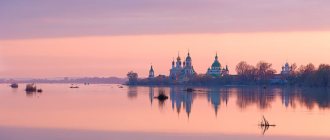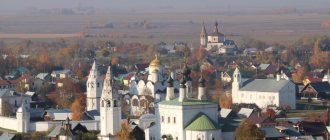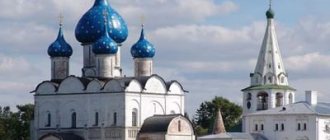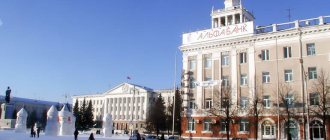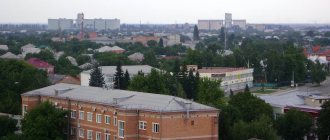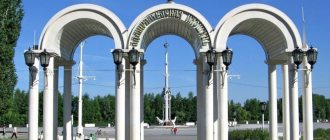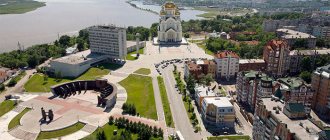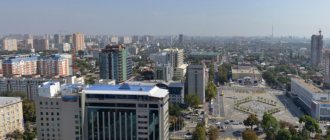Uglich is a beautiful, cozy Russian town in the Yaroslavl region, formed on the Volga River and part of the Golden Ring of Russia . It is located exactly in the place where a sharp bend is formed. The settlement has a complex, rich history. There is a calm, peaceful life here. An important point of the “Golden Ring” annually attracts tourists from all regions. The originality and colorfulness of the city is difficult to convey in words. The popular tourist center is famous for its magnificent monuments of Russian architecture. Uglich sentry, cheese-making enterprises are known throughout the country.
It is comfortable to come to the city at any time of the year. A temperate continental climate predominates. Winters are snowy and sometimes frosty. Summer is warm and not hot. Autumn is the season of prolonged rains. In general, tourists try to travel during holidays - New Year, Easter, summer vacation, Maslenitsa. City Day is celebrated on July 21. Celebrations, festivals, fairs, and fireworks are organized on the streets. “Ugleche Pole” is a festival that many guests strive to attend. An equally popular event is the photo festival.
Brief history
The 16th century is the date of one of the most dramatic events in Rus'. The death of Tsarevich Dmitry occurred. This was the reason for the formation of the Great Troubles. There are several opinions about the origin of the sonorous name. Most likely, it comes from the word “Ugilets”. This is the name given to the right angle made by the Volga River. If you believe the legend, then the founding date of the city is 937. The founder is a relative of Princess Olga, a prince from Pskov. The city is mentioned in the chronicle in 1148. In the 13th century, the settlement became the center of the appanage principality of the same name. Subsequently, the village was often destroyed. In 1328, thanks to Ivan Kalita, Uglich became part of the lands of Moscow.
The heyday of the city began in 1642. This is the period of the reign of Prince Bolshoi. A large palace complex appeared on the territory. Chambers of appanage princes were built, which have been perfectly preserved to this day. In 1713, the Transfiguration Cathedral appeared. On the Volga bank, in tribute to his memory, the Church of Demetrius on the Blood was built.
What to bring from Uglich?
Any tourist who visits Uglich will find something unusual and wonderful that they can bring home or give to friends as a souvenir.
First of all, these are wood products. Carved wooden products made by Uglich craftsmen will not leave any person indifferent. Beautiful boxes, unusual figurines, kitchen utensils and much more are perfect as souvenirs.
Pottery products can be purchased in the souvenir shop at the famous Uglich Pottery Workshop. The workshop is very popular among local residents and guests of the city. The workshop offers visitors a number of master classes, and every year in February the Potter's Wheel Festival is held.
Almost 7,000 people have already sculpted their own clay pot and painted it with the help of a professional artist. Next to the workshop there is a small souvenir shop where you can purchase various ceramic dishes produced in the workshop in accordance with Russian pottery traditions.
Where is the city and how to get there?
regularly conducts trips to the cities of the Golden Ring of Russia.
Travel from Kazan
Travel from Cheboksary
Travel from Yoshkar-Ola
You won’t have any difficulties getting there from Moscow or any other cities. It is more convenient to choose ground transport, since there is no airport in the immediate vicinity. The Moscow-Uglich train was recently launched. You can check the train schedule on the official website. Your travel time will be just over six hours. You can also get there with a transfer if you use the Moscow - Rybinsk route.
There is a bus to Uglich. The duration of the trip depends on traffic jams. As a rule, it does not exceed six hours. It will be faster to get there by private car. You will need to follow the M8 highway. When you reach Sergiev Posad, you turn onto the Moskovskoye Highway, then follow the Novouglichskoye Highway and exit onto the P-104 highway. After the Rostov highway you will enter Uglich. There are signs on the roads.
For lovers of romance, a river cruise on the Volga will suit you. A boat trip will give you a lot of unforgettable impressions. The vessel departs from the Northern River Station of the capital. You will reach the place in 12 hours. The river port in Uglich is located on the street. Portovaya, 1.
Popular message topics
- Unemployment (concept and types, its consequences and causes)
Unemployment is a separate component of the country's economy. A part or category of economically active citizens, one of the components of the entire working population. - Creativity of Lyudmila Ulitskaya
Date of birth of Lyudmila Evgenievna Ulitskaya - February 21, 1943. Place of birth - the Republic of Bashkiria, the city of Davlekanovo. The future writer graduated from the Faculty of Biology of Moscow State University and worked for two years in her specialty. - Diamond is a mineral.
On Earth, the most precious mineral is diamond. It is also amazingly hard, but can still crack during processing. Therefore, the jeweler has to do painstaking and difficult work to make this stone
Hotels
The hotel room stock is represented by options of different levels of comfort. You can choose a room to suit any budget. The city has many guest houses and country houses where you can also stay comfortably. Such hotels as “Moscow”, “Uspenskaya”, “Chaika”, “Voznesenskaya”, “Terem”, “Volzhskaya Riviera”, “Inn” and others are in high demand. Housing prices are moderate. The private sector offers apartments for daily rent.
Cafes, restaurants
There are many places in the city where you can eat tasty and inexpensive food. The menu mainly presents dishes of Russian and European cuisine. In public gardens and parks there are summer cafes, canteens and pavilions with refreshments. Pay attention to such catering establishments as “Russian Estate”, “Avenue”, “Trapeza”, “Vaskin Rabbit”, “Russian Cuisine”, “Brunch”, “Vkusnoteka”, “Mont Plaisir”.
Attractions
Tourists come to the mysterious Uglich to gain a deeper insight into the history of their native land and look at familiar things from a different perspective. Here you can plunge into the special atmosphere of past centuries and get acquainted with the unique architecture of antiquity.
The Uglich Kremlin is a whole complex of buildings formed on the banks of the Volga. In ancient times, this was a fortified area protected by wooden fences and ramparts. The defensive structures have not survived to this day. There are reminders of him in the paintings. The incredibly beautiful architectural ensemble acts as a calling card of the city. It consists of the Transfiguration Cathedral, an administrative building and princely chambers.
Temples
The Transfiguration Cathedral embodies the motifs of Yaroslavl architecture. The 17th century structure is an elegant temple, equipped with a central dome and four domes. The elegant architecture fascinates passersby. The interior decor is no less delightful. The walls and vaults are decorated with 59 frescoes. They trace the events of the New Testament. These are copies of Renaissance works that were created in the 19th century by a local resident. A copy of Raphael’s famous fresco “The Transfiguration” deserves special attention.
The iconostasis consists of six tiers. Icons from the 17th to 19th centuries are mounted on it. The bell tower is a famous shrine in history. It was from here that the alarm bell sounded in 1591. At this time, the population learned of the death of Tsarevich Dmitry. The original bell complex has not survived to our time. Today there is a modern clock mechanism installed here, which functions as before.
Alekseevsky Monastery is considered one of the oldest in Russia. The date of its foundation falls on the 14th century. It was founded by Metropolitan Alexy. During the Polish-Lithuanian war the building was destroyed. Later, restoration work began. The main decoration of the monastery is the Assumption Church with its refectory. In the old days this was the most beautiful place. The shrine even bore a consonant name - “Wonderful”.
The building is made in the style of true Russian religious architecture. The Church of John the Baptist is open to visitors. Frescoes from the 19th millennium remain on its walls. The monastery itself stands on a hill. From the mountain you can admire views of the city landscape.
The Epiphany Monastery was once made entirely of wood and was part of the Kremlin. In 1664, the process of active development of the territory began. Therefore, a quieter place was chosen for the shrine. It was moved to the road and installed near the ravine. Soon large-scale work began. The Theodore Church and the Epiphany Cathedral appeared. The construction of the cathedral was under the leadership of Konstantin Andreevich Ton.
The large monastery of the city has a laconic architecture and delights with its modest, sophisticated silhouette. The church is decorated with huge domes. The oldest church is the Smolensk Church (1400). Today it is under restoration. The main shrines of the monastery are the Feodorovskaya icon of the Mother of God, the image of the “Watching Eye” and others.
The Resurrection Monastery is a beautiful ensemble made of stone. It consists of three buildings that are connected to each other by a gallery. In the northern part of the territory there is the Resurrection Cathedral. It features a variety of designs. Glazed tiles are made on the drum and arcade. The portal has interesting red brick designs. A belfry of four tiers is installed in the south. Today, restoration efforts are actively continuing in the complex. There are benches in the courtyards. If you can’t go inside, you can admire the architecture from the outside. Behind the belfry there is a refectory and a chapel. And nearby is another compact Church of Hodegetria. It has perfectly preserved elements of ancient frescoes.
An integral part of history is the Kazan Church . The plot of land where the shrine now stands was important in the past. Here is the famous Assumption Square or Torgovaya Square. If you refer to the documents, then St. George’s Church stood here. She burned completely. Then the Passionate Mother of God appeared, who also did not survive for the same reasons. Then the merchants came to the conclusion that it was necessary to build trading shops here.
Only in 1639 an order was issued to build a new monastery. An image appeared in it - a miraculous icon of the Mother of God. During the fire, the icon burned down. Soon a stone church was built. Its architecture was close to the Baroque style, and the bell tower consisted of three tiers.
Above the green crowns of trees, entering the village, you see the white stone Korsun Church. Immediately your attention is drawn to the stunning lace trim. In the 13th century there was a monastery on this site. Today the temple delights with its beautiful, slender lines and five-tiered bell tower with eight corners. The facades are decorated with red brick trim. The building successfully combines Naryshkin baroque and Russian architecture. of the Nativity of John the Baptist also has a similar patterned facade .
Museums
In 2022, an unusual bicycle museum “Samokat” . The collection is represented by several dozen of this invention and they are all unique in their own way. There are forged models, 18-19 centuries, made of wood. There are also many modern structures for walking and playing sports. Moreover, all products are allowed to be touched and photographed. The creators of the exhibition are thinking about creating a whole cycling club.
Be sure to check out the Hydropower Museum . He also appeared recently. It was January 2011. The exhibition received the title of “Best Regional Museum in Russia”. Indeed, there is something to see here. Information about dams and dikes, hydroelectric power stations and much more is presented in a fun, interactive way. You can learn a lot about the enormous potential of hydropower.
No less interesting is the Museum of Urban Life . It was organized right in the public library building. The halls are compact in size. You will be able to learn about the life and traditions of your ancestors, get information about how they lived, prepared their food, and sewed clothes. Rare handicrafts are on display. The second hall of the gallery is an entire apartment demonstrating the life of a middle-income citizen in England. The premises of the building are often used to organize musical evenings. In the tea room you can relax with an invigorating drink.
The Museum of the History of Uglich was created by city enthusiasts. Lovers of the Native Land selected and collected exhibits bit by bit. The Kulagin family made a huge contribution to the creation of the exhibition. A lot of information is devoted to the Middle Ages. The exhibition center is private. You can visit it for a symbolic cost - 50 rubles.
You will get a lot of impressions from the excursion. The first room contains household items for residents (dishes, clothes, jewelry). In the second hall, models of architectural monuments are exhibited. Among them there are many lost that have not survived. On the walls there are illustrations of the city's history. Among the exhibits there are many echoes of the Great Patriotic War. For example, mock-ups of combat aircraft hang above the ceiling. In the courtyard of the house there are also exhibitions - a copy of the Uglich Kremlin tower, cannons, the coat of arms of the USSR and others.
The Chambers of the Appanage Princes is a beautiful red brick building, which is an ancient monument. The medieval building has miraculously survived to us. Today there is a museum exhibition of the history of the region from the 17th to the 19th centuries.
It is difficult to pass by the Museum of Myths and Souvenirs of the Russian People . It is notable for the accumulation of a database of myths and superstitions. Initially, it was a creative workshop of two individuals - Daria Chuzhoy and Alexander Galunov. You will learn a lot of fascinating things about folk festivals, witches and rituals. Truly an exciting excursion. You will be able to understand the meaning of fortune telling, amulets, and sayings.
One can talk endlessly about the diversity of exhibition centers. There are countless of them in Uglich. We recommend visiting the museum of dolls, glass, Russian vodka, and prison life to broaden your horizons.
Despite the fact that the town is small, you won’t be able to see all the interesting sights in one day. After curious excursions, don’t forget to just stroll along the embankment, breathing in the air from the Volga, or go to the local recreation park to relax in a summer cafe with a glass of ice cream.
Recreation places outside the city
For lovers of a calm and peaceful pastime, excellent tourist recreation centers are organized in the suburbs. You can come here with friends and family to enjoy Russian picturesque natural areas.
Such complexes as “Breeze”, “Guest House on the Volga”, “Merchant” are popular. Famous are the hunting base “Hunter Village”, the sanatorium named after. Vorovsky, “Terem”, Russian estate in Uglich. They are located on the banks of reservoirs, in a picturesque area. You can go fishing by going to the Volga, to the villages “Derevenki”, “Yakutino”, “Ilino” or to the fishing bases “Quail Island”, “Breeze”, “Uglich Houses”.
Monastery of Russian princes
The age of Uglich has confidently crossed the thousand-year mark. Founded, according to various sources, in the 10th-11th centuries, it served as the residence of Russian princes and also performed a defensive function. Being a border city between the Moscow and Tver principalities, it was repeatedly attacked not only by alien conquerors, but by its own Russian troops directed by the warring princes.
It is impossible to count how many times Uglich burned. How many times was it restored and rebuilt from scratch - too. The last major fire here occurred with the establishment of Soviet power. The temple, church, Orthodox city was not to the liking of the Bolsheviks, who deliberately set it on fire in different parts. Eyewitnesses claimed that that fire turned into a sea of fire, in which the historical center of the city actually died.
Therefore, most of the buildings of the Middle Ages, built of wood, have not survived to this day. Only those built of stone survived, many on the site of those destroyed by fires in the distant Middle Ages. But the preserved diversity is enough to immerse yourself in the history and culture of the Russian people, enjoy the beauty of temple architecture, stroll leisurely along the banks of the Volga, watching how elegant churches and monasteries replace each other one after another.
Fact . Historians associate the name of the city with its location. Uglich stands on the “bend” of the Volga - in the place where the river bed forms a “corner”. In the old days, people used this natural “signpost” to navigate their way to Yaroslavl. Another version connects the name with coal mines: it is believed that black fuel has long been mined in the suburbs.
pixabay.com/


